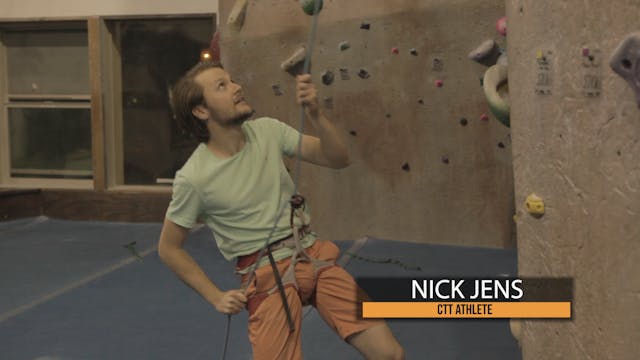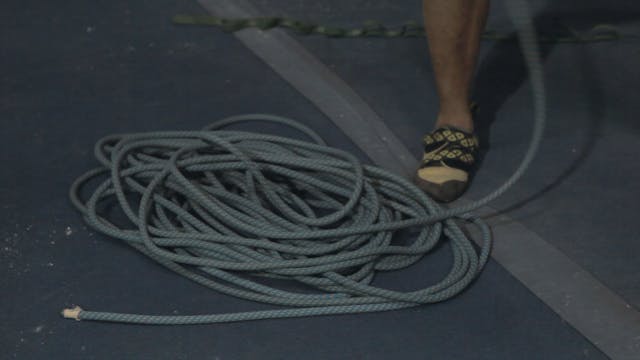Gym Lead Climbing: 11. Lead Belay Stances
Gym Lead Climbing
•
50s
In our other Lead Belaying videos, we mentioned that an ideal belay stance helps position the belayer as close to underneath the first draw as possible (while trying to minimize potential of the lead climber crashing into the belayer, if the leader were to fall).
There are two main safety reasons:
1. Safety for the belayer, so they are not pulled into the wall when a climber falls.
2. Safety for the climber, so their foot or body is not snagged with the belay rope.
Another consideration for lead belay stance is deciding whether to use a ground anchor. Anchors are typically used if the climber is heavier than the belayer. For more on this subject see our video on “How to Top Rope Belay”.
We hope you found this video helpful. Feel free to comment below with questions or thoughts!
Please remember, climbing is inherently dangerous. Climb at your own risk.
Up Next in Gym Lead Climbing
-
Gym Lead Climbing: 12. Soft Catches
The “soft catch”, also know as a dynamic belay, is considered an advanced technique. In theory, this reduces the impact of a climber when they fall a distance.
The first way to give a soft catch is by carefully letting out a very short amount of rope as the belayer engages the belay device, t...
-
Gym Lead Climbing: 13. Stacking the Rope
As the lead climber prepares for the climb, the lead belayer should prepare by “flaking” the rope. This is also known as “stacking the rope”.
Flaking (i.e. to flake) the rope involves starting with one end of the rope and forming a coil on the ground, threading the rope through your hands to f...

